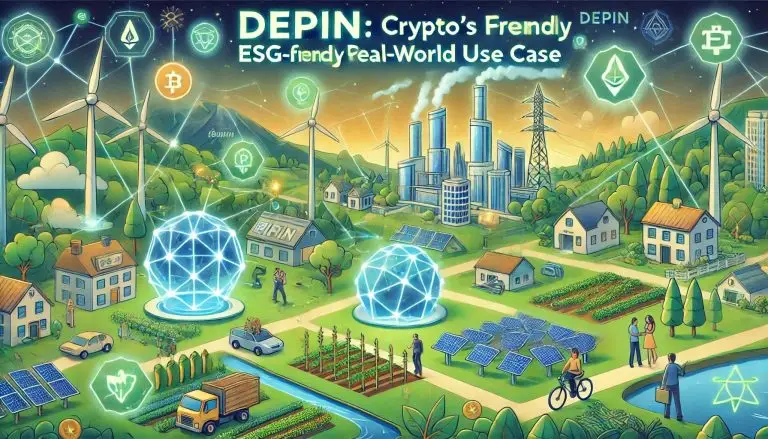The world of cryptocurrency has seen various sectors emerge and grow during this market cycle. Among these, artificial intelligence (AI), real-world assets (RWAs), and decentralized physical infrastructure (DePIN) tokens are gaining traction. While meme tokens often lack a clear purpose, DePIN tokens stand out by offering practical solutions to real-world problems. This article explores the potential of DePIN tokens, their applications, and their alignment with ESG (Environmental, Social, and Governance) principles.
Key Insights
- DePIN tokens solve real-world problems by optimizing underused resources.
- They support ESG goals through decentralization, efficiency, and transparency.
- Projects like Render, Grass, and Hivemapper showcase the practical applications of DePIN.
- With over $1 billion in investments, DePIN is positioned as a promising sector in the crypto space.
What Is DePIN?
DePIN (Decentralized Physical Infrastructure Networks) leverages crypto and blockchain technologies to enhance access to underutilized infrastructure like wireless networks and computing power. DePIN tokens incentivize resource sharing, decentralize infrastructure, and mitigate risks associated with single points of failure or censorship by centralized providers. This decentralized ethos aligns with blockchain’s foundational principles of security and transparency.
Why DePIN Tokens Matter
The demand for AI and other computationally intensive applications is surging, surpassing current infrastructure capabilities. Traditional providers, such as Amazon’s AWS, dominated 32% of the global cloud infrastructure market as of Q4 2022. However, DePIN tokens offer an alternative approach by enabling resource decentralization and expanding supply through incentive mechanisms.
Examples of DePIN in Action
- Render and Ionet: These projects connect users in need of hardware to train AI models with owners of underutilized computing capacity. By bridging this gap, DePIN tokens foster efficient resource utilization.
- Grass: Grass allows users to monetize unused bandwidth by connecting their wallets and selling it to AI companies. These companies utilize the bandwidth to scrape internet data for training AI models. This creates a win-win scenario by tapping into latent resources.
- Hivemapper: Hivemapper offers drivers, such as those working for Uber or other taxi services, the opportunity to earn extra income by collecting map data using dashcams. This data is valuable for industries like insurance, automated vehicle training, logistics, and government road assessments.
How DePIN Tokens Support ESG Goals
DePIN aligns with ESG principles by improving resource efficiency and enabling broader access to infrastructure. Key benefits include:
- Environmental Impact: By utilizing underused resources, DePIN reduces waste and lowers the need for new infrastructure investments, minimizing environmental impact.
- Social Benefits: DePIN democratizes access to infrastructure, enabling individuals and small businesses to earn income by sharing their unused assets.
- Governance: Decentralization reduces reliance on centralized entities, increasing transparency and accountability.
Governments that criticize crypto for its perceived inefficiency may find DePIN’s focus on optimizing existing systems more aligned with their ESG objectives.
DePIN: A Billion-Dollar Bet
The potential of DePIN tokens has caught the attention of venture capitalists, with over $1 billion invested in this sector by the end of 2023. This significant backing reflects growing confidence in DePIN as a viable and impactful application of blockchain technology. The question remains: will these investments yield the expected returns?
Conclusion
As demands for infrastructure and computational resources grow exponentially, DePIN tokens present a compelling use case for cryptocurrency. By enabling decentralized, efficient, and incentivized resource sharing, DePIN could become a cornerstone of crypto’s contribution to real-world problems. Its alignment with ESG principles further enhances its appeal to both investors and regulators. With venture capitalists already placing substantial bets on DePIN, its future looks promising.
Follow Our Official Social Channels:
